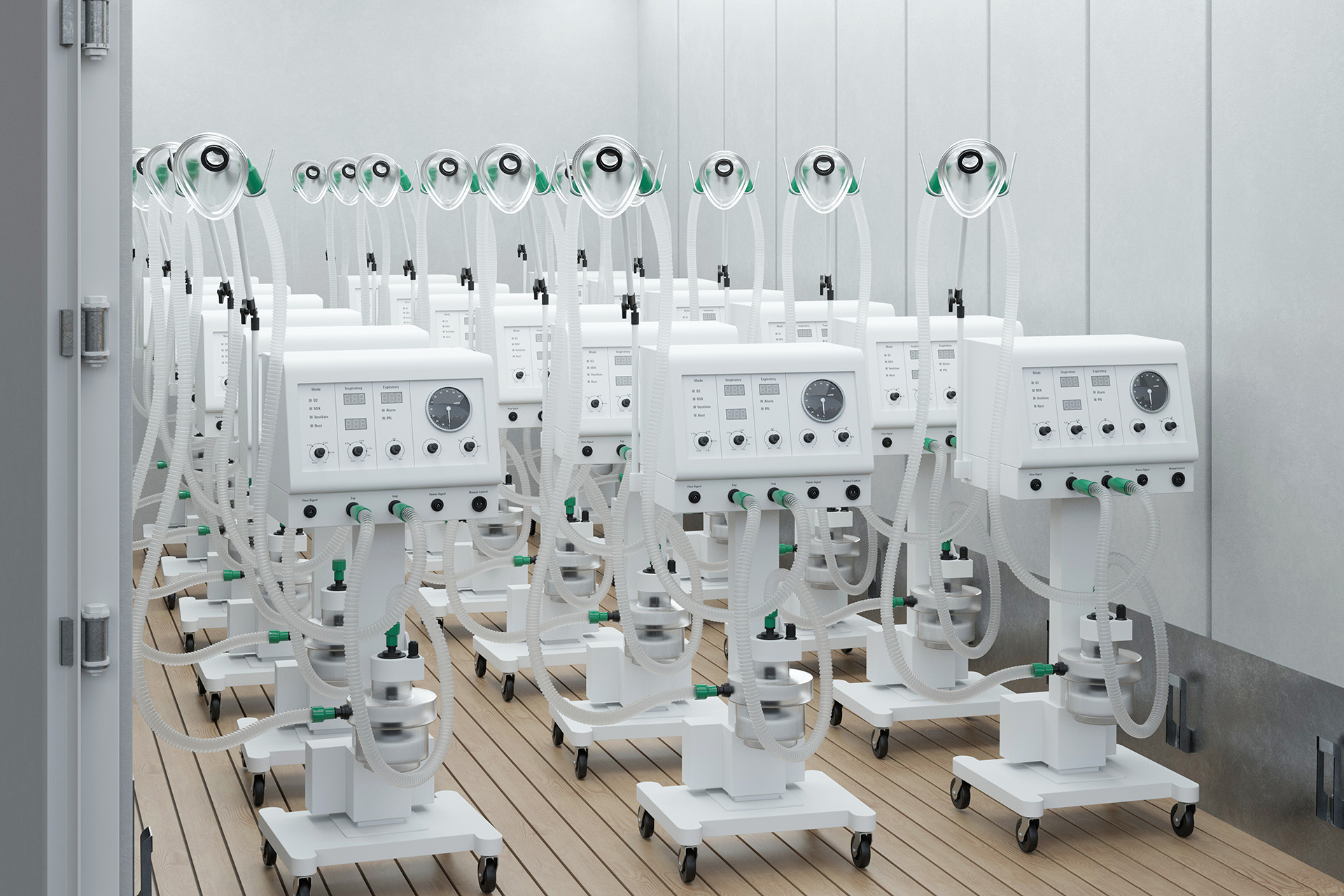Virus vs. Open Source

About a year ago, ventilators were in short supply. The COVID-19 pandemic had caused demand to skyrocket, leading to global supply shortages. In Germany alone, the number of intensive care beds with ventilator capability was increased from about 22,000 before the pandemic, to more than 28,000 today, not including reserves, according to the German Hospital Association (DKG). At the same time, numerous open-source projects for the production of ventilators by decentralized manufacturers emerged worldwide. In May 2020, a scientific team from Fraunhofer IPK, in collaboration with the non-profit organization Public Invention, set out to collect, analyze and evaluate these projects with the OPEN.Effect study.
Open method, open feedback
For the study, 27 contributors to 14 representative projects in the open-source hardware (OSH) community were interviewed about their experiences. Interviewees came from a variety of disciplines, including project management, software and hardware development, and design. A variety of organizational forms were also represented, from open communities to non-profit organizations and research institutes to companies. The interviews were based on 13 criteria for OSH projects, developed on the basis of the preliminary research, including for example openness, buildability or functional and reliability testing.
The results of the interviews provide an overall picture of the status of the projects, as well as which procedures have proven to be optimal and which challenges have arisen. On the basis of this information, the authors of the study have derived some suggestions that could be helpful for other OSH projects in the future.
From idea to deployment
How can the OSH community and its projects be further developed in concrete terms? A ventilator goes through a number of phases, from design to deployment on ill patients. Along these phases, the authors of the OPEN.Effect study make specific suggestions for improving processes.
Some examples are:
1. Medical personnel or other end users should be involved in the development process from the very beginning, in order to align the technology with common device models and provide tutorials.
2. Due to difficulties in the supply chain, regionally available and standardized components should be used to enable modularity and interchangeability.
3. The development process of the device should be fully and continuously documented for future projects.
4. The finished device must meet the high quality standards of the medical industry. Centralized testing facilities can greatly reduce the burden on (decentralized) manufacturers to procure test equipment. Standardized testing procedures and protocols offer an advantage here.
5. The final and decisive hurdle after the test phase is the application for approval for the finished ventilator by national authorities. The laborious bureaucratic process should be fully documented, which will facilitate future projects.
Overall, the study shows that it is possible for open communities to provide fast and safe solutions to a critical problem during the pandemic. The complete English-language study can be downloaded for free at www.ipk.fraunhofer.de/open-effect. OPEN.Effect was funded as part of the »Fraunhofer vs. Corona« campaign by the Fraunhofer-Gesellschaft.
 Fraunhofer Institute for Production Systems and Design Technology
Fraunhofer Institute for Production Systems and Design Technology